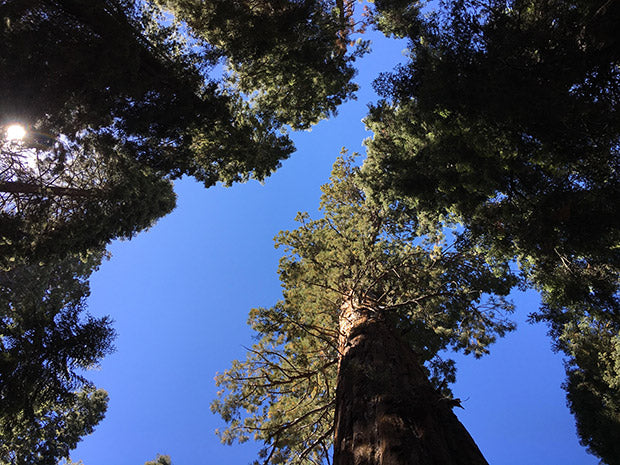Sequoia National Park is a testament to nature's size, beauty, and diversity -- huge mountains, rugged foothills, deep canyons, vast caverns, and the world's largest trees. Located in the southern Sierra Nevada east of Visalia, California, Sequoia National Park was established on September 25, 1890.
The park spans 404,064 acres and encompasses a vertical relief of nearly 13,000 feet. The highest point in the contiguous 48 United States, Mount Whitney, at 14,505 feet above sea level is located within the park. The park is famous for its giant sequoia trees, including the General Sherman tree, the largest tree on Earth. The General Sherman tree grows in the Giant Forest, which contains five out of the ten largest trees in the world. The Giant Forest is connected by the Generals Highway to Kings Canyon National Park's General Grant Grove, home to the General Grant tree among other giant sequoias. The park's giant sequoia forests are part of 202,430 acres of old-growth forests shared by Sequoia and Kings Canyon National Parks.

Many park visitors enter Sequoia National Park through its southern entrance near the town of Three Rivers at Ash Mountain at 1,700 ft. The lower elevations around Ash Mountain contain the only National Park Service-protected California Foothills ecosystem, consisting of blue oak woodlands, foothills chaparral, grasslands, yucca plants, and steep, mild river valleys. The region is also home to abundant wildlife: bobcats, foxes, ground squirrels, rattlesnakes, and mule deer are commonly seen in this area, and more rarely, reclusive mountain lions and the Pacific fisher are seen as well. The last California grizzly was killed in this park in 1922.
At higher elevations in the front country, between 5,500 and 9,000 feet, the landscape becomes montane forest-dominated coniferous belt. Found here are Ponderosa, Jeffrey, sugar, and lodgepole pine trees, as well as abundant white and red fir. Found here too are the giant sequoia trees, the most massive living single-stem trees on earth. Visitors often see mule deer, Douglas squirrels, and American black bears, which sometimes break into unattended cars to eat food left by careless visitors.
The vast majority of the park is roadless wilderness; no road crosses the Sierra Nevada within the park's boundaries. 84 percent of Sequoia and Kings Canyon National Parks is designated wilderness and is accessible only by foot or by horseback. Sequoia's backcountry offers a vast expanse of high-alpine wonders. Covering the highest-elevation region of the High Sierra, the backcountry includes Mount Whitney on the eastern border of the park, accessible from the Giant Forest via the High Sierra Trail. On a traveler's path along this 35-mile backcountry trail, you'll pass through about 10 miles of montane forest before reaching the backcountry resort of Bearpaw Meadow, just short of the Great Western Divide.
Continuing along the High Sierra Trail over the Great Western Divide via Kaweah Gap, you pass from the Kaweah River Drainage, with its characteristic V-shaped river valleys, and into the Kern River drainage, where an ancient fault line has aided glaciers in the last ice age to create a U-shaped canyon that is almost perfectly straight for nearly 20 miles. On the floor of this canyon, at least two days hike from the nearest road, is the Kern Canyon hot spring, a popular resting point for weary backpackers. From the floor of Kern Canyon, the trail ascends again over 8,000 ft. to the summit of Mount Whitney. At Mount Whitney, the High Sierra Trail meets with the John Muir Trail and the Pacific Crest Trail, which continue northward along the Sierra crest and into the backcountry of Kings Canyon National Park.
Click here to see the Sequoia National Park poster.
Rob Decker is a photographer and graphic artist with a single great passion for our National Parks! When he was just 19, he studied under Ansel Adams in Yosemite. Now he’s on a journey to create original, WPA-style artwork for each of our national parks!
Click here to learn more about Rob's work and The National Park Poster Project.
Join the growing community of 75k+ National Park enthusiasts to receive insider deals and updates.


